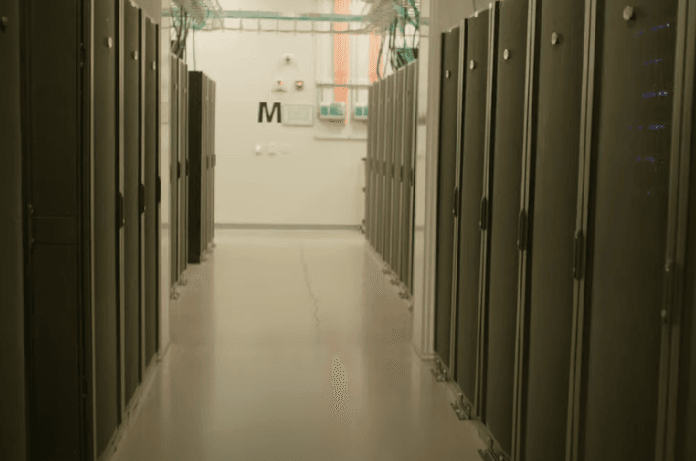Imagine holding a microscope, a telescope, and a particle accelerator all in the palm of your hand. Now imagine that this tool doesn’t just observe the world but can simulate it, explore it, and unravel its deepest mysteries. That’s precisely how Emmanuel Candes, faculty director of Stanford Data Science, describes Marlowe, Stanford’s latest and 1st cutting-edge GPU-based computational instrument. This state-of-the-art GPU-based powerhouse is poised to transform research across the university. Right from exploring the farthest reaches of the cosmos to simulating the inner workings of a single cell.
Set to begin accepting applications on January 15, 2025, Marlowe is more than just a technological marvel; it’s a beacon of Stanford’s commitment to innovation. With 248 Nvidia H100 GPUs, and the same kind of chips powering AI giants like OpenAI, Marlowe promises to place Stanford at the forefront of data science and computation. And with a $30 million investment to support hardware, research teams, and operations, this “superpod” is primed to unlock discoveries across countless fields.
But what exactly does this mean for Stanford’s researchers and the world at large? Let’s dive into how some of the university’s brightest minds plan to harness Marlowe’s superpowers.
1. Jure Leskovec: AI-Powered Virtual Cells
Jure Leskovec, a leading computer scientist, envisions a future where experiments don’t require petri dishes or living organisms. Instead, they happen on computers. His research focuses on developing AI models to simulate human cells a field known as “in silico” biology.
Leskovec and his team are working on creating a “digital twin” of a biological cell, using foundational models of molecules like DNA, RNA, and proteins. The potential benefits are staggering. Instead of costly, time-consuming, and sometimes dangerous lab experiments, scientists could test new drugs or therapies virtually, speeding up research and cutting costs exponentially.
“With Marlowe, we can process massive datasets of proteins and biomolecules,” Leskovec says. “This could revolutionize how we understand diseases like cancer or Alzheimer’s and how we develop treatments.”
In other words, Marlowe isn’t just helping scientists; it’s making breakthroughs faster, cheaper, and safer for everyone.
2. Jennifer Pan: Unraveling Social Media’s Secrets
For Jennifer Pan, a political scientist, Marlowe opens new frontiers in understanding how information spreads and how it’s manipulated in the digital age. Pan studies political communication, particularly how authoritarian regimes use social media to control narratives.
Her research spans billions of data points from platforms like YouTube, Weibo, and Douyin (Chinese TikTok). With Marlowe’s computational power, she can analyze text, images, and videos on an unprecedented scale. This means identifying patterns in how misinformation travels and how governments censor or amplify certain messages.
“Our current work is limited by scope and time,” Pan explains. “Marlowe will let us explore broader patterns, helping us understand the global information landscape in ways we never could before.”
By shedding light on these digital dynamics, Pan’s work has the potential to defend democracy and expose misinformation campaigns.
3. Susan Clark: Mapping the Milky Way
When you look up at the night sky, you might see a sprinkling of stars. But for Susan Clark, an astrophysicist, the Milky Way is a dynamic, ever-evolving system of 400 billion stars and that’s just one galaxy in a universe of 2 trillion galaxies.
Clark’s research focuses on the interstellar medium: the gas and matter between stars that eventually form new celestial bodies. Using data from the European Space Agency’s Gaia Project, which maps over a billion stars, Clark’s team builds computational models to understand how energy flows across the galaxy.
However, these models are limited by current computing power. “This model represents just 1% of the Milky Way,” says Philipp Frank, a postdoc on Clark’s team. “It took weeks to produce using a single GPU.”
Enter Marlowe. With its 248 GPUs, computations that once took weeks could be completed in days or even hours. This means faster discoveries about star formation and the structure of our galaxy, perhaps even insights that challenge our understanding of the universe itself.
4. Sherri Rose: The Math Behind Better Health Care
Sherri Rose isn’t just a statistician; she’s a detective for healthcare inefficiencies and inequities. Her work uses advanced algorithms to analyze healthcare costs, detect fraud, and identify where marginalized communities are being underserved.
Marlowe’s computational power will enable Rose and her team to develop larger, more complex AI models trained on synthetic data. These models can simulate healthcare systems to find inefficiencies and inequities and ultimately improve outcomes for patients.
“Marlowe allows us to build better auditing tools to detect fraud and manage costs,” Rose says. “It could help create a fairer, more efficient health care system.”
In an era where healthcare costs are skyrocketing, Rose’s work has the potential to save billions of dollars and improve lives in the process.
Pushing Boundaries and Broadening Horizons
While the hardware behind Marlowe is undeniably impressive, Emmanuel Candes emphasizes that its real power lies in the research it enables. From biology and physics to political science and medicine, Marlowe is set to catalyze breakthroughs across a broad spectrum of fields.
“For almost every area of research, computation is the future,” Candes says. “Marlowe is going to keep Stanford at the cutting edge. It’s not just another machine but; it’s a gateway to new possibilities.”
Beyond empowering current faculty, Marlowe is also a magnet for the next generation of researchers, postdocs, and students eager to work on data-intensive projects. As Candès puts it, “Without a tool like Marlowe, we can’t simulate the universe, discover new medicines, or explore the mysteries of human life. With Marlowe, we become computational explorers.”
Ready to Explore the Future?
Marlowe isn’t just a leap forward for Stanford; it’s a leap forward for science and society. As applications open on January 15, 2025, the excitement is palpable. From simulating virtual cells to decoding the Milky Way, Marlowe’s potential is boundless.

